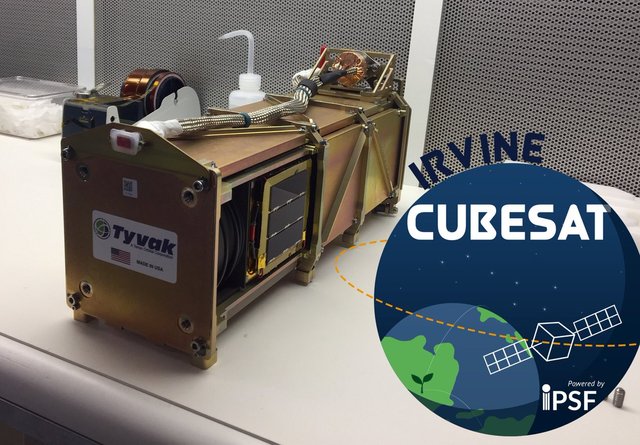CubeSats: Tiny Payloads, Huge Payoffs
Satellites were once the domain of large government and corporate organisations. But thanks to CubeSats, the day is fast approaching when small hobby groups and even individuals could have their own satellites.

credit
Tiny beginnings
In my post yesterday, The Latest Private Space Company Goes Into Business, I wrote about Rocket Labs, a New Zealand company that has launched its first commercial satellites. The payload of the Electron rocket is only 150 to 225 kg, and it launched seven of them. So they must be really small.
The first satellites were tiny: Sputnik 1 (USSR, 1957) was only 58 cm in diameter; Explorer 1 (USA, 1958) weighed only 13.37 kg. But as time went on and requirements grew, satellites became more complex and much bigger. The Hubble Space Telescope (USA, 1990) weighs in at over 11 tonnes. Of course, the large manned satellites are far larger than that, with the International Space Station a massive 200 tonnes.
Miniaturisation is a technological trend that continues apace today. Computers that were almost the size of a house 60 years ago were not nearly as powerful as the one in your smartphone. Likewise with satellites.

credit: European Space Agency
CubeSat
A CubeSat is a type of miniaturized satellite that has standard dimensions and weight limits — no more than 1.33 kg per unit. A single CubeSat unit is a cube of 10 x 10 x 10 cm. That's not very big, is it? That's a volume of 1l. But they can be stacked together like Lego blocks to form a bigger satellite, in 2, 3 or 6 units.
The specifications were developed by California Polytechnic and Stanford Universities in 1999, to promote and develop the skills necessary for the design, manufacture, and testing of small satellites intended for low earth orbit. Almost all the CubeSats launched in the 15 years after that were for academic purposes - research labs and universities. But by 2104 most newly deployed CubeSats were for commercial or amateur projects.
CubeSats are constructed from standard low-cost parts that still meet the rigorous safety specification of launching vehicles. Want to build a CubeSat? Well, you can buy the parts online, for example CubeSatShop.
Getting it up there
The launch costs for CubeSats are also much lower than other designs. Because of their size, they can hitch a ride on a rocketship — fit in unused space in a rocket delivering a much larger payload. Also, because of their standardised design, they can be loaded into a standard CubeSat deployer, such as NanoRacks.
Costs to build a CubeSat average out at about $50,000, although some can be much more expensive. Launching one can cost about $100,000, but costs are rapidly coming down - Rocket Labs charges $60,000 to launch a CubeSat.
Typical uses involve experiments that can be miniaturized or serve purposes such as Earth observation or amateur radio. Because of their low cost, they are also used to test the feasibility of new space technologies, or to perform biological experiments where the underlying theory is not well established. These are usually placed in low earth orbit, but in May 2018 two MarCO CubeSats became the first CubeSats to leave earth orbit, on their way to Mars alongside the InSight mission.
CubeSats typically deploy solar arrays to power them. They can be quite power-hungry. Usually, they have multiple computers handling different tasks in parallel including attitude control (orientation), power management, payload operation, and primary control tasks. These computers are in turn controlled by the primary computer that also handles payload related tasks, which might include image processing, data analysis, and data compression.
These little satellites also carry some sort of propulsion mechanism. When they are released from the deployment vehicle, they are pushed out with a spring-loaded mechanism. But of course, being in space, they would simply continue along that path without propulsion to manoeuvre them. CubeSats make use of cold gas, chemical propulsion, electric propulsion, and solar sails technologies.
New uses
CubeSats are increasingly being used as a better and cheaper substitute for much larger satellites, such as weather satellites. Often a fleet of satellites working in combination over a wide area can form a much better picture of weather or other patterns than a single large satellite.
The Rocket Labs Electron launch on 11 November 2018 carried with it a very special CubeSat: Irvine01, built by high school students from six schools in Irvine, California. Holding a low-resolution camera that will take pictures of Venus, Rocket Lab said in its launch kit that Irvine01 “will mark the first time American high school students have put an operational satellite into orbit”.

credit
50 years ago, the idea of an individual owning a computer was unimaginable. Now satellites can be owned by individuals. Very exciting.
References:
http://www.cubesat.org/
https://ipsf.net/news/nasa-selects-irvine03-cubesat-for-launch-mission/
https://en.wikipedia.org/wiki/CubeSat
https://www.nasa.gov/mission_pages/station/research/experiments/1350.html
https://www.irvinecubesat.org/
Also posted on Weku, @tim-beck, 2018-11-15